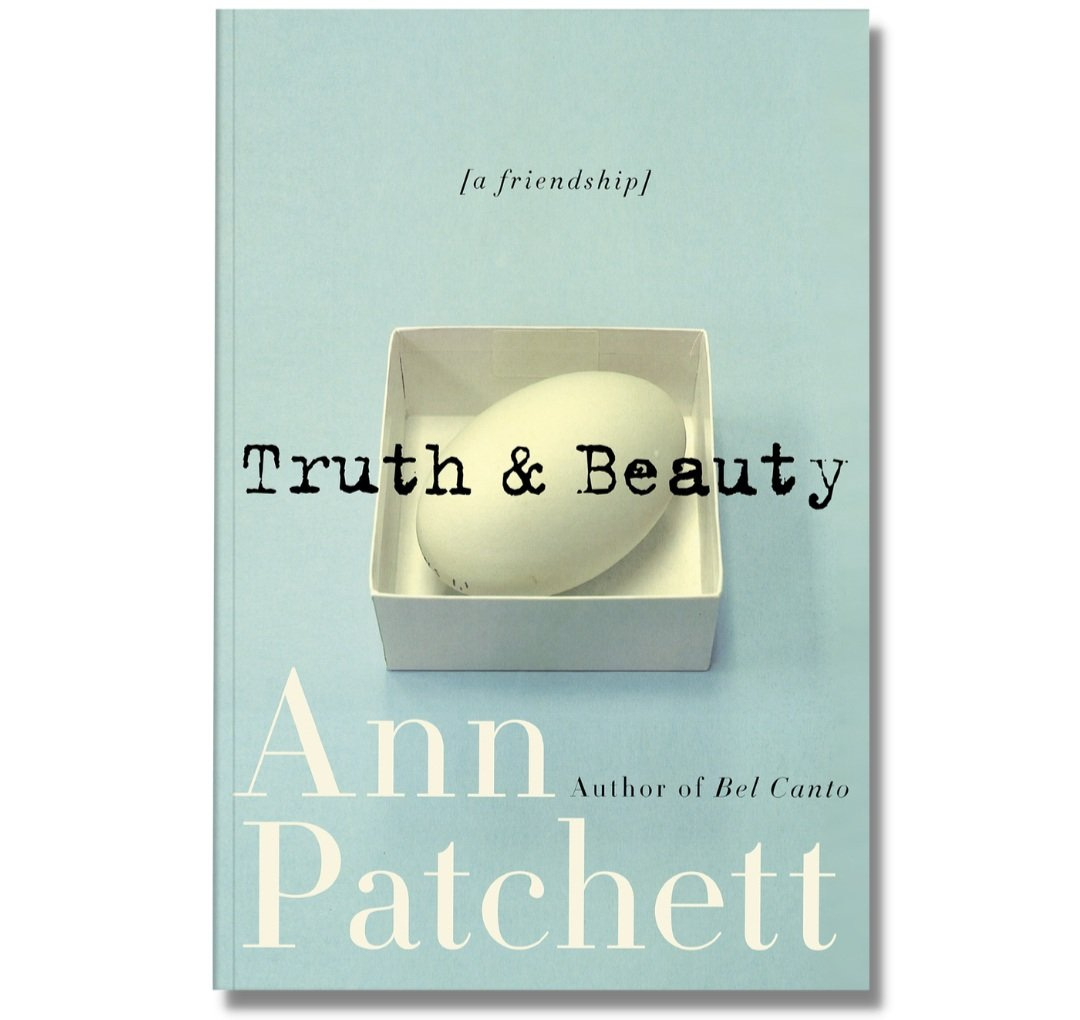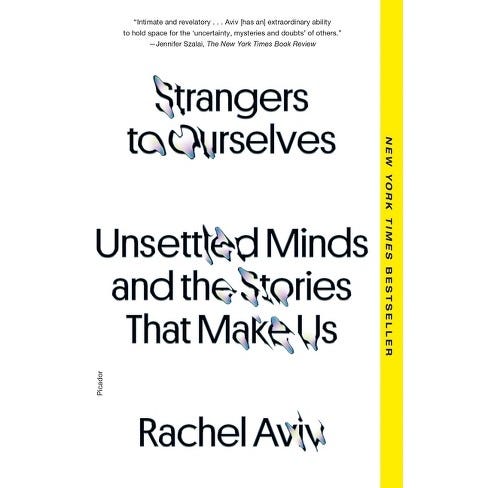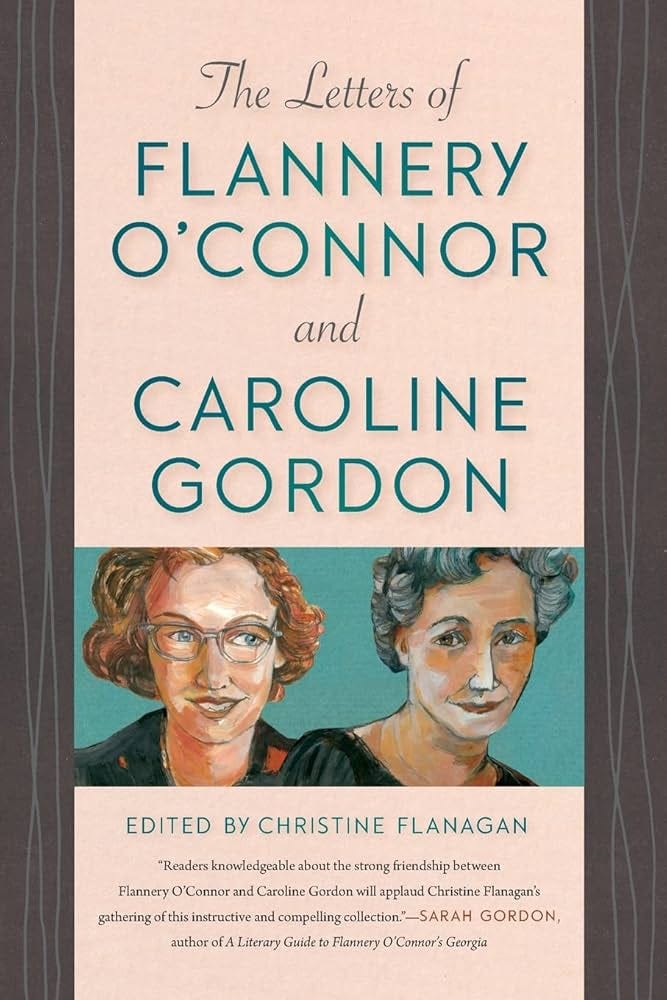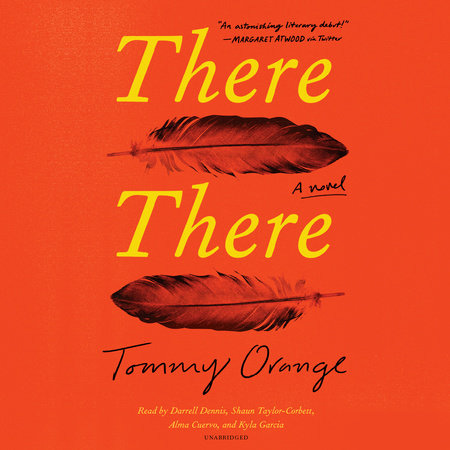
When I was an English student at Notre Dame, one of my professors allowed our class to select the final book on the syllabus for a course on contemporary U.S. fiction. After a few proposals and discussion, we chose Marilynne Robinson’s Gilead.
Gilead is one of my favorite books, and I’d talked about Robinson with this professor before during office hours. So I knew that he considered Robinson to be “not for him,” and hadn’t read any of her books. When the week came to discuss Gilead, he said as much to us—before stating that, to his surprise, he’d ended up loving the novel.
Several months later, I stumbled across this professor’s blog, in which he included a list of the books he’d read that year. At the top, he singled out Gilead as the best book he’d read , repeating the reservations he’d had going into it, before offering unequivocal praise.
I think that there is something uniquely wonderful in sharing books with other people. Particularly when they unexpectedly love what you love—or, conversely, when you find, in their favorites, something wholly unanticipated and new.
For me, this year, that book was As I Lay Dying. My current thesis advisor loves Faulkner, and after hearing him discuss it with one of my classmates before workshop one evening, the two of them repeating, in a way that I found intriguing and obscure, “Vardamon and the fish! ‘My mother is a fish!’" I knew I needed to know what this was. But I did not expect to fall into it as deeply as I did. So much so that I finished it in the least ideal of places, sitting on the outskirts of an open mic at a brewery on a Saturday night, tuning out the chaos around me as I read through its final pages.
The lists below—the books I read this past year—are idiosyncratic, as my reading habits typically are. Looking back, I’ve arranged them into groups, which is partly true to how I read (one book leads to the next), though the narrower themes emerged only retrospectively. Many books could appear on multiple lists; I’ve grouped them in the way that they’ve tended to occupy my thoughts afterwards, the relationships between them that seem richest in memory. The books with stars are ones that were assigned reading for a course—which means only that they they were chosen for me rather than by me. By and large, if I finish a book, I’ve found something to like (if not love) in it—though there are a few that I had to force my way through.
In any case, while such listing feels a bit self-indulgent, I offer it because I enjoy perusing such lists myself—and because I’m selfishly hoping for comments offering some of your favorites from this year too!
Writerly friendship: Ann Patchett and Lucy Grealy
I read Patchett’s Truth and Beauty at the end of the semester, on a trip to Cleveland with some old friends from South Bend. It was the perfect time for this: Patchett’s recollection of her MFA years made me reflect on the friendships and writing relationships I’d formed this past year at BGSU, as well as the ones that had continued on from earlier stages in my life. Patchett’s depiction of the writing life led me to her other books, as well as Grealy’s memoir, forming a constellation of books that offered a sort of portrait of the two writers, who met in undergrad, became friends and roommates during their time at the Iowa Writer’s Workshop, and maintained a friendship through their years as young writers, up through Grealy’s death. Patchett’s essay “The Getaway Car” (which I wrote about here) also prompted me to read her first novel, The Patron Saint of Liars. Patchett’s nonfiction remains my favorite in this group, though I loved how all four of these spoke to one another.
Truth and Beauty: A Friendship (Ann Patchett)
Autobiography of a Face (Lucy Grealy)
This is the Story of a Happy Marriage (Ann Patchett)
The Patron Saint of Liars (Ann Patchett)

Novels
A catch-all category that typically forms the bulk of my reading. I’ve been avoiding assigning star-ratings on Goodreads all year, but I’ve still found myself thinking about which books—specifically, which novels—I loved most. The ones below are listed (from top to bottom) in the order I liked them best, but for a whole host of different reasons: Craft or character or style. The surprise of a unique structure, a permeating mood evoked by language. It’s a fluid list, one that would probably change if I made it again tomorrow, and determined, at least in part, by the circumstances in which I read each story. (Is it fair to put James below There There, given that I listened to James on audiobook while mopping floors during closing shifts at the brewery? And that There There was one of the first books I read in print after months of nothing but audiobooks, which made me feel especially warm towards it? Probably not. But I’m accepting the fact that reading is highly contextual; that it’s not just the books themselves but the moment in which we encounter them.)
I also have no idea where to place What Maisie Knew. I enjoyed reading about James’s craft after finishing the book more than I enjoyed actually reading the novel itself. Perhaps some of my dislike stems from the audiobook narrator trying to adopt the voice of a pious-sounding British child. Perhaps I feel like I should like it more than I do because it is, well, Henry James. But feels wrong to put it any lower on the list, so I’ve stuck it in the middle and am letting it remain there, in spite of my ambivalence.
In any case: I strongly recommend the ones at the top, enjoyed the ones in the middle, and did not care for the final one at the bottom. (I enjoyed Toibin’s Brooklyn, as well as the film, which I watched with my sister and mother. But his sequel undid what I’d liked about the first story, and I almost wish I’d left the original stay untarnished by it.)
As I Lay Dying (William Faulkner)
There There (Tommy Orange)
James (Percival Everett)
What Maisie Knew (Henry James)
Little Fires Everywhere (Celeste Ng) *
Cross-Stitch (Jazmina Barrera, trans. Christina MacSweeney) [book review for MAR]
Bitter Water Opera (Nicolette Polek) [book review for MAR]
Long Island (Colm Toibin)
Memoir
I find nonfiction much easier to listen to on audiobook than fiction, so I turned to memoir this summer during the month or so after the concussion, when I wasn’t reading in print. Mary Karr is the standout here: I would reread all of her books in a heartbeat (especially Lit), and wish I’d read The Art of Memoir earlier so that I’d had a better ear for craft while reading the rest.
Karr’s memoirs are listed in chronological order; the remaining memoirs, as with the novels, are in the order in which I liked them (I should say: I didn’t care for these last three and would not recommend them. But I am likely in the minority here. Jamison’s memoir makes Karr’s recommendation list, and the New York Times included Stay True on their 100 Best Books of the 21st Century.)
The Art of Memoir (Mary Karr) *
The Liars’ Club (Mary Karr)
Cherry (Mary Karr)
Lit (Mary Karr)
Stay True (Hua Hsu)
An Unquiet Mind (Kay Jamison)
Prozac Nation (Elizabeth Wurtzel)

The mind
I read a few different books on mental illness this year, as research for my thesis project. Jamison and Wurtzel’s memoirs could fall on this list as well (I would not have finished either if I hadn’t been reading them for this purpose.) But the ones below feel separate to me. They are not memoir—or at least not strictly that. They each have a mixture of the author’s experiences alongside research and other people’s accounts. I would recommend all three, especially Aviv.
Strangers to Ourselves: Unsettled Minds and the Stories that Make Us (Rachel Aviv)
The Noonday Demon: An Atlas of Depression (Andrew Solomon)
The Best Minds: A Story of Friendship, Madness, and the Tragedy of Good Intentions (Jonathen Rosen)

Sylvia Plath
I’d read a smattering of Plath’s poems over the years, but never a full collection of her poetry. I started Heather Clark’s lengthy biography of Plath at the start of the summer, then stopped to read Ariel because I wanted a better understanding of the poems she was referencing, then returned to the biography because I wanted Clark’s interpretation. . . It ended up being a lot of back-and-forth, but I think both benefited from the other (especially since Clark focuses on Plath first and foremost as a poet, including analyses of specific influences within each poem.) I reread The Bell Jar afterwards, and while Clark’s biography peaked my curiosity, it’s still a novel I struggle to like. I would take Plath’s poems over it any day.
Red Comet: The Short Life and Blazing Art of Sylvia Plath (Heather Clark)
Ariel (Sylvia Plath)
The Bell Jar (Sylvia Plath)
Spirituality, agriculture, community
This is such an odd smattering of books, but in my head they’re related, because I read that at some point in the novel-drafting process this year. Wiman’s book is an unusual form—part poetry, part essay. Elliptical and dense. A pastiche of quotation. It’s the kind of writing where you need to linger over sentences—not because they’re obscure, but because they offer much to ponder. In this case, about faith, doubt, hope, despair, love. I littered the book with post-its and copied a full poem from it into my notebook so that I wouldn’t risk forgetting it. It’s a book I can imagine returning to multiple times.
I chose The Unsettling of America somewhat randomly—I’d been meaning to read Wendell Berry for years, and this was the only one available on audiobook. Nick Offerman (aka Ron Swanson from Parks and Rec) reads it, which was mildly distracting but oddly fitting for Berry’s critique of modern American agriculture. I found myself agreeing wholeheartedly with parts and bristling at others—as a whole, the book was thought-provoking and challenging.
I stumbled across Colin Miller’s book through a former classmate’s Substack: I’d been looking for books on the Catholic Worker, and here was Renee, recommending that someone wanting such an introduction start here. In her words, “Colin’s thesis is simply this: the bonds of a Christian community must be the Sermon on the Mount and the practice of the works of mercy. If not, Christians are just a bunch of individual capitalists who go to a building to pray alone, together on Sunday.”
Zero at the Bone: Fifty Entries Against Despair (Christian Wiman)
The Unsettling of America (Wendell Berry)
We Are Only Saved Together (Colin Miller)

Observation and attention
Summer reads. I read Upstream between in between hikes at Cuyahoga National Park, and listened to Pilgrim either walking outside or wishing I was. Both left me with an appreciation for how the writer directs her attention at the smallest of details, the way in which they can become absorbed in observation and render it so exactly (and, at times, brutally) on the page. Though Didion’s subject material is far different, her attentiveness and observation makes me think of her writing alongside Dillard and Oliver.
Pilgrim at Tinker Creek (Annie Dillard)
Upstream (Mary Oliver)
Let Me Tell You What I Mean (Joan Didion)
North and West (Joan Didion)
Short Stories
I’ve been intrigued by flash and microfiction this year, so the Flash Fiction collection below was especially interesting to read. I ended up teaching several pieces from it in my undergrad creaive writing course (Joy Castro’s “A Notion I Took” was the standout for me.) The Isle of Youth has the kind of uncertain female protagonists and complex relationships that I tend to enjoy, along with a fluid prose style and knack for conveying emotion through understatement. I was a bit adrift in Her Body, feeling more than understanding some of the stories, but it left me wanting to discuss some of my favorites with my classmates, many of whom love this collection.
Flash Fiction America: 73 Very Short Stories (ed. James Thomas, Sherrie Flick, and John DuFresne)
The Isle of Youth (Laura van den Berg)
Her Body and Other Parties (Carmen Maria Machado)
Graphic novels
I briefly turned to the graphic novel genre as I transitioned from audiobooks back to print at the end of the summer. I’d heard great things and was not disappointed.
Maus I and II (Art Spiegleman)
Craft, theory, pedagogy
The books below (with the exception of the O’Connor letters) were assigned for class—on techniques of fiction, literary theory, creative writing pedagogy, and novel-writing process respectively.
The Letters of Flannery O’Connor and Caroline Gordon (ed. Christine Gordon)
The Writers Notebook II: Craft Essays from Tinhouse (ed. Christopher Beha) *
How to Interpret Literature: Critical Theory for Literature and Cultural Studies (Robert Dale Parker) *
The Anti-Racist Writing Workshop: How to Decolonize the Creative Writing Classroom (Felicia Rose Chavez) *
Refuse to be Done: How to Write and Rewrite a Novel in Three Drafts (Matt Bell) *

Shakespeare
I love how the context and community can shape a reading of a piece, especially works as rich as these. I read King Lear for the first time in the spring semester, for a literary theory class, and so in a short span of time, I saw how multiple lenses shaped our interpretation of the play. I’ve read (and taught and seen) A Midsummer Night’s Dream more times than I can count at this point, but it had been years since I’d revisited it, so I was excited to read it again this summer with a discussion group for the Catherine Project. Talking about it with a group of new people—spanning a variety of ages, interests, and nationalities—left me with renewed appreciation for the inexhaustibility of Shakespeare’s language and characters.
King Lear (William Shakespeare) *
A Midsummer Night’s Dream (William Shakespeare)
Public readings
I also love when the silent, solitary act of reading crosses over into the communal—as it does when people gather to hear a writer read their work.
The first two in this list are novels. At the AWP conference back in February, I attended a session on writing coming-of-age stories. It started with being a brief reading, followed by an interview/conversation between Choi and Matthew. I was taken by their discussion of craft, but also by their readings, especially Choi’s prose. Trust Exercise was my favorite of the two—there is a particularly satisfying shift in the middle that completely surprised me. It’s high on my list to reread next year.
The third is a poetry collection. The BGSU creative writing program hosts a reading series on Thursday nights, featuring a mixture of MFA and BFA students, visiting writers, and professors. I purchased Dad Jokes after hearing Amorak Huey, one of the poetry professors here, read in the spring. It was one of the most fun readings I’ve attended—a sort of choose-your-own-adventure style reading, in which Amorak would name two categories (high school or middle school? Star Wars or E.T.?) and ask the audience to vote, before reading the poem we chose. The mystery of the poem-not-heard contributed to my desire to read a full collection—but I also just loved the narrative and pathos of these, the family relationships, the way in which deeper feeling and humor collide unexpectedly.
Trust Exercise (Susan Choi)
All This Could Be Different (Sarah Thankam Matthews)
Dad Jokes from Late in the Patriarchy (Amorak Huey)

My list of “books I’d like to read” is always too long—and somehow always itching to grow. So I’d love to hear any favorite titles (from 2024 or whenever) below!




![Flash Fiction America: 73 Very Short Stories [Book] Flash Fiction America: 73 Very Short Stories [Book]](https://substackcdn.com/image/fetch/$s_!ozgJ!,w_1456,c_limit,f_auto,q_auto:good,fl_progressive:steep/https%3A%2F%2Fsubstack-post-media.s3.amazonaws.com%2Fpublic%2Fimages%2Fbd4ccfd3-1d6b-48d3-a5a5-8176a53980e4_665x1000.jpeg)
A few of my favorite reads in 2024 were books I read for the second time: The Boys in the Boat, and Kristin Lavransdatter. A new experience for me was reading some Daphne Du Maurier short stories—a few duds, but lots of strange, spooky fun.
I read Colin Miller‘s column in the Catholic Spirit and think I might need to check out his book!
I love this list! (Better for my brain than a list of ‘things to buy for people’!) I saw a lot of things I’ve read, whether in the past of just this year. You’ve inspired me to sit down next week and make my own list. Thanks also for titles re: craft. I need to learn more about writing itself and these will be helpful.